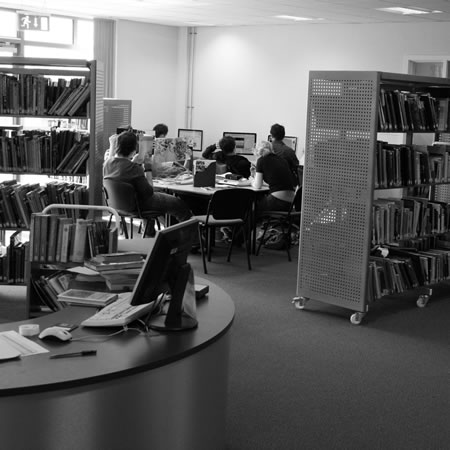
One of the more traditional ways of providing information about the library is in the course handbook, via a poster or on the college website.
The VLE is one more way of providing learners with information on the library. Though with the extra tools and functionality that the VLE brings, the learners won’t only be able to access information on the library, but also engage with the library and library staff.
It’s not just about having information about when the library opens, services available, computer bookings, rules and regulations…
It’s not just about having lists of e-resources and links available…
Nor an electronic guide to the books, journals and newspapers that learners can borrow and read.
It’s not just about embedding library systems such as Heritage (or similar) so that learners can check their loans or reserve books.
A VLE has a lot more functionality, and library teams should really make use of that to ensure that the
Remember with a VLE that information can be video, or audio, or a virtual tour!
A VLE can have a discussion forum, a place for learners to seek help and ask questions.
A VLE can have quizzes; an induction quiz for example, or a questionnaire to solicit feedback from learners on how they are (or are not) using the library.
A VLE can be used for virtual inductions, reader development progammes, study skills, information skills, reading skills and other short courses or workshop sessions.
Curriculum teams will also be able to embed or links from the library into their courses, ensuring that the library and its wealth of resources are easily available to the learners on the course. Generally if learners use resources from the library (guided by their teacher) in addition to teacher provided resources they are not only more like to achieve on their course of study, but will gain higher grades or marks.
The VLE is not an obvious place for many library staff, but it makes sense to use it to support the core library function. In the same way that the VLE is often used as a supplement to the physical learning environment, the librar,y which is often a key area in the physical learning environment, to not have a similar area on the VLE would be depriving learners of an effective resource to enhance their learning.







